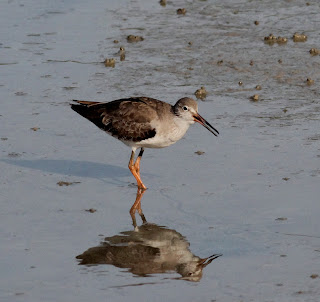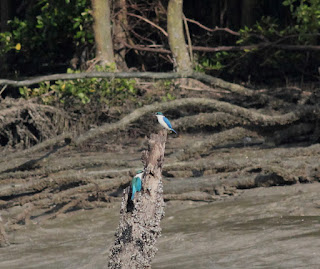After visiting Teluk Air Tawar, we went searching for harriers in Penaga, Tanjung Dawai and then to a district named Yan. These places have huge ricefields but unfortunately there were no harriers.
At Penaga we only saw this Black-Capped Kingfisher and heard a few Zitting Cisticolas calling - that was all we had.
This forest reserve is really huge, stretching from Sungai Petani right up to Tanjung Dawai. As indicated in the sign board its size is about 3,076 hectares. Although this location is a mangrove area but not many birds were seen here.
First bird seen was this Common Iora.
Next was this Collared Kingfisher.
When we reached Tanjung Dawai it was already late noon. As the tide was still high and covering the mudflats, we turned into a place called Kampung Nelayan and saw this Striated Heron.
The next bird seen was a Collared Kingfisher again.
When reaching Yan, i could see a huge mudflat area but unfortunately not many waders were present there. What a pity ! First bird seen was this Common Sandpiper.
Then we saw a couple of Pond Herons and a lone Little Egret.
Then a Striated Heron was spotted catching a cat fish.
Before we call it a day, this White-Bellied Sea Eagle was seen flying back from the sea towards its roosting place in the mainland.







































































